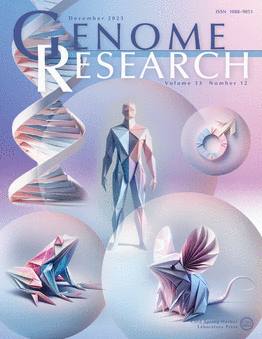QuadST identifies cell-cell interaction-changed genes in spatially resolved transcriptomics data
IF 5.5
2区 生物学
Q1 BIOCHEMISTRY & MOLECULAR BIOLOGY
引用次数: 0
Abstract
Recent advances in spatially resolved transcriptomics (SRT) have provided valuable avenues for identifying cell-cell interactions and their critical roles in diseases. We introduce QuadST, a novel statistical method for the robust and powerful identification of cell-cell interactions and their impacted genes in single-cell SRT. QuadST models interactions at different cell-cell distance quantile levels and innovatively contrasts signals to identify interaction-changed genes, which exhibit stronger signals at shorter distances. Unlike other methods, QuadST does not require the specification of interacting cell pairs. It is also robust against unmeasured confounding factors and measurement errors of the data. Simulation studies demonstrate that QuadST effectively controls the type I error, even in misspecified settings, and significantly improves power over existing methods. Applications of QuadST to real datasets have successfully revealed biologically significant interaction-changed genes across various cell types.QuadST在空间解析转录组学数据中识别细胞-细胞相互作用改变的基因
空间分解转录组学(SRT)的最新进展为鉴定细胞间相互作用及其在疾病中的关键作用提供了有价值的途径。我们介绍了一种新的统计方法QuadST,用于识别单细胞SRT中细胞-细胞相互作用及其影响基因。QuadST模型在不同的细胞-细胞距离分位数水平上相互作用,并创新地对比信号以识别相互作用改变的基因,这些基因在较短的距离上表现出更强的信号。与其他方法不同,QuadST不需要指定相互作用的细胞对。它对未测量的混杂因素和数据的测量误差也具有鲁棒性。仿真研究表明,即使在错误指定的设置中,QuadST也能有效地控制I型误差,并且比现有方法显着提高了功率。QuadST在真实数据集上的应用已经成功地揭示了各种细胞类型中具有生物学意义的相互作用改变的基因。
本文章由计算机程序翻译,如有差异,请以英文原文为准。
求助全文
约1分钟内获得全文
求助全文
来源期刊

Genome research
生物-生化与分子生物学
CiteScore
12.40
自引率
1.40%
发文量
140
审稿时长
6 months
期刊介绍:
Launched in 1995, Genome Research is an international, continuously published, peer-reviewed journal that focuses on research that provides novel insights into the genome biology of all organisms, including advances in genomic medicine.
Among the topics considered by the journal are genome structure and function, comparative genomics, molecular evolution, genome-scale quantitative and population genetics, proteomics, epigenomics, and systems biology. The journal also features exciting gene discoveries and reports of cutting-edge computational biology and high-throughput methodologies.
New data in these areas are published as research papers, or methods and resource reports that provide novel information on technologies or tools that will be of interest to a broad readership. Complete data sets are presented electronically on the journal''s web site where appropriate. The journal also provides Reviews, Perspectives, and Insight/Outlook articles, which present commentary on the latest advances published both here and elsewhere, placing such progress in its broader biological context.
 求助内容:
求助内容: 应助结果提醒方式:
应助结果提醒方式:


